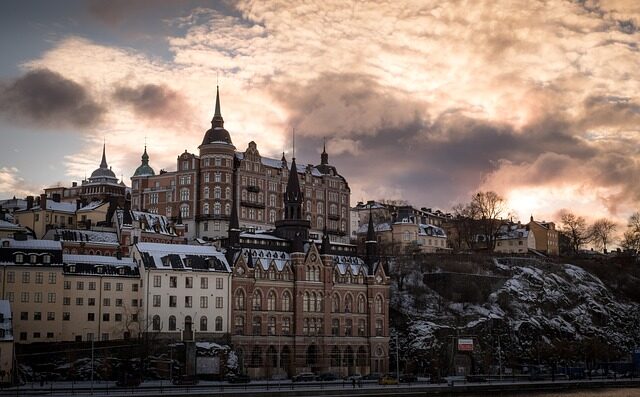The allure of the North has long captured the imaginations of artists, with its sweeping landscapes and profound sense of mystery. At the heart of this fascination lies romanticism in Nordic painting, a movement that blended national pride with the wild and untamed spirit of the region’s nature. This artistic period was not just a style but a search for identity and an expression of deep-seated values that still resonate in the echoes of Nordic culture today.
- Romanticism in Nordic Painting: An Overview
- What Are The Characteristics Of Romanticism In Nordic Painting?
- How Did National Romanticism Influence Nordic Architecture?
- Who Were The Key Artists In Scandinavian Romanticism?
- What Role Did Nature Play In Nordic Romantic Art?
- How Did Political Context Shape Nordic Romanticism?
- What Is The Significance Of The Sublime In Nordic Landscapes?
- Romanticism in Nordic Painting: An Overview
- What Are The Characteristics Of Romanticism In Nordic Painting?
- How Did National Romanticism Influence Nordic Architecture?
- Who Were The Key Artists In Scandinavian Romanticism?
- What Role Did Nature Play In Nordic Romantic Art?
- How Did Political Context Shape Nordic Romanticism?
- What Is The Significance Of The Sublime In Nordic Landscapes?
Romanticism in Nordic Painting: An Overview
The 19th century saw a remarkable shift in the artistic landscape of the Nordic countries as they began to develop a distinct style that would come to be known as National Romanticism. This movement was characterized by a renewed interest in the natural beauty and folklore of the region, often juxtaposed with the sweeping changes of industrialization. The artists of this era sought to capture the essence of their national identity, creating works that were both deeply personal and universally evocative.
As we delve into the heart of Romanticism in Nordic painting, we encounter an array of artists who left an indelible mark on the art world. Their works continue to inspire and captivate, offering a unique window into the soul of the Nordic people.
The movement was not confined to canvas alone but extended its reach to architecture, literature, and music, creating a cultural renaissance that celebrated the region’s past while forging a path into the future.
What Are The Characteristics Of Romanticism In Nordic Painting?
Characteristics of Nordic romanticism in visual arts are evident in the emotive landscapes, the use of dramatic lighting, and a profound respect for nature. These works often featured rugged terrains, the mystical play of light in the skies, and a sense of grandeur that transcended the mere representation of a scene.
The paintings also depicted a deep appreciation for folklore and tradition, revealing a world where myth and reality intertwined seamlessly. The human figures, when present, were portrayed in harmony with their surroundings, suggesting a spiritual connection to the land.
Color played a pivotal role, with artists employing vibrant hues to capture the varying moods of the landscapes. The brushwork was expressive and bold, contributing to the overall impact of the scenes depicted.

Nordic artists were adept at conveying the sublime – that feeling of awe and terror in the face of nature’s majesty. This was a hallmark of Romantic art, evoking a sense of wonder at the power and beauty of the natural world.
How Did National Romanticism Influence Nordic Architecture?
The impact of romanticism on Scandinavian architecture can be seen in the grand structures that dot the landscapes of the Nordic countries. Architects drew inspiration from medieval and prehistoric designs, creating buildings that were both a nod to the past and a statement of national identity. Notable examples include the Finnish National Theatre and Stockholm City Hall, with their integration of local materials and traditional motifs.
This architectural movement also aligned closely with Art Nouveau, emphasizing organic shapes and decorative elements that echoed the surrounding natural beauty.
In contrast to the industrial steel and glass structures rising in other parts of Europe, these buildings stood as monuments to the artistic and nationalistic aspirations of the era. They were not just functional spaces but embodiments of a cultural renaissance.
As with painting, the architecture of the period sought to reflect a unique Scandinavian narrative, simultaneously embracing modernity and honoring heritage.
Who Were The Key Artists In Scandinavian Romanticism?
When speaking of notable works of Nordic romantic artists, it’s impossible not to mention figures such as Akseli Gallen-Kallela and Edvard Munch. Their contributions to the art world went beyond mere aesthetics, incorporating themes of national pride and profound human emotion.

Other pivotal artists include Johan Christian Dahl, considered the father of Norwegian landscape painting, and his student Thomas Fearnley. Peder Balke also stands out with his evocative depictions of the Norwegian coast.
These artists’ works were characterized by a deep love of their homeland, combined with technical mastery and innovative approaches to composition and color.
What Role Did Nature Play In Nordic Romantic Art?
Nature was not just a backdrop in Romanticism in Nordic painting; it was a central character. Artists depicted the raw, untamed beauty of the Nordic landscape with a reverence that bordered on the spiritual. Mountains, forests, and seas were rendered with a majesty that sought to evoke an emotional response in the viewer.
The changing seasons provided a wealth of inspiration, from the starkness of winter to the abundance of summer, each offering a different palette and mood for the artists to explore.
Light, especially the ethereal glow of the midnight sun and the mysterious aurora borealis, was used to dramatic effect. It added a sense of magic and otherworldliness to the paintings.
Nature was also a symbol of national identity, with artists portraying the distinctive landscapes as a manifestation of their country’s spirit.

How Did Political Context Shape Nordic Romanticism?
The political climate of the 19th century was one of change and upheaval, and this was reflected in the art of the time. The influence of nationalism on Nordic painting is evident in the way artists embraced symbols of their nation’s history and culture.
As countries sought to define themselves on the world stage, artists turned to the past, drawing on historical events and figures to create a sense of continuity and purpose.
Romanticism provided a means for commentary on contemporary issues, with painters using their canvases to explore themes of freedom, independence, and the rights of individuals.
In some cases, the art was a direct response to political struggles, serving as both a form of protest and a call to unity. This was particularly true in the regions striving for independence or undergoing significant social reform.
What Is The Significance Of The Sublime In Nordic Landscapes?
The concept of the sublime is pivotal in understanding the emotional power of Romanticism in Nordic painting. This philosophical idea, associated with the overwhelming grandeur and awe-inducing qualities of nature, found perfect expression in the vast and dramatic landscapes of the North.
Artists sought to capture moments that transcended everyday experience, where the beholder is confronted with the overwhelming force of nature and its capacity to inspire both fear and wonder.

The portrayal of the sublime in Nordic landscapes is not just about visual impact; it is about conveying an emotional truth. It speaks to the human experience of confronting forces greater than ourselves, and the humble realization of our place within the natural world.
In the brooding skies, the towering mountains, and the turbulent seas, one finds the essence of the sublime – a reminder of the power of nature and the enduring spirit of humanity.
As we continue to explore the rich tapestry of romanticism in Nordic painting, we invite viewers to immerse themselves in the profound beauty and complexity of this artistic movement. The Wadsworth Atheneum Museum of Art, for instance, provides an opportunity to witness these themes firsthand through their exhibition «Sublime North: Romantic Painters Discover Norway.»
To further enrich our understanding of this artistic period, let’s take a moment to view a depiction of Romanticism in action:
This movement, with its deep connection to nature, its stirring of national pride, and its profound artistic expressions, continues to captivate and inspire. Nordic Romantic painting is more than just an art form; it is a key to understanding the soul of the North, a region where the sublime beauty of the landscape is forever intertwined with the identity of its people.


